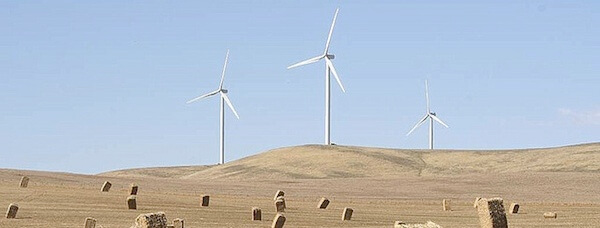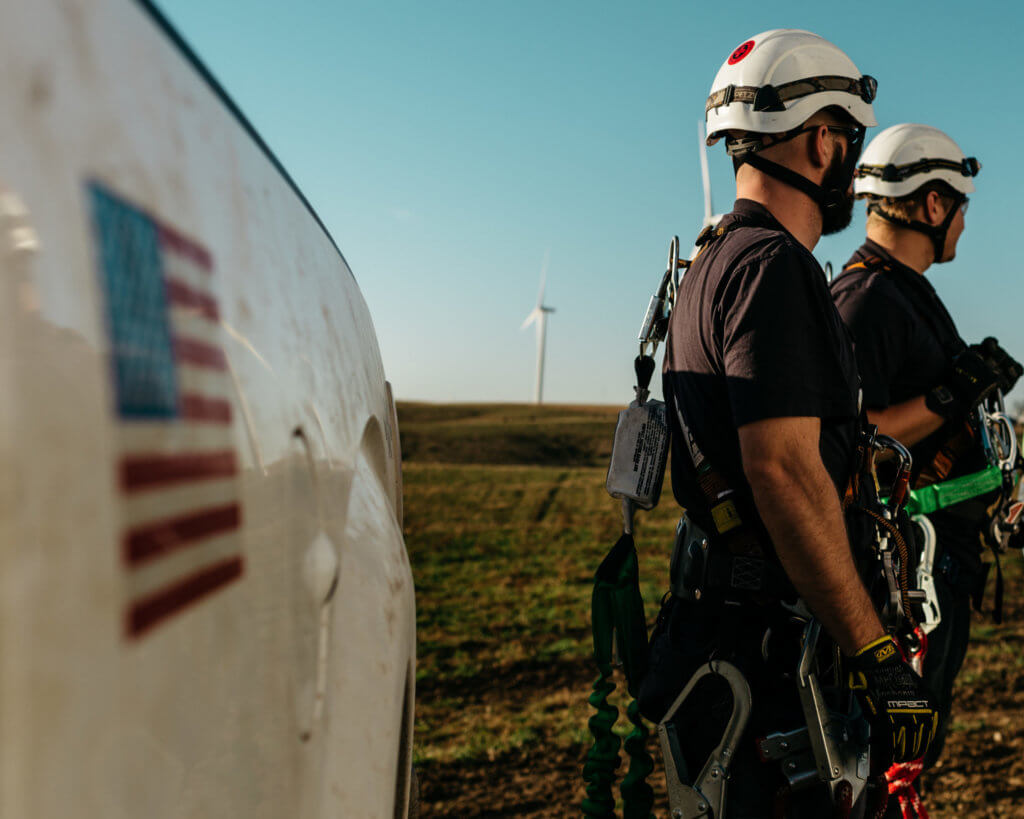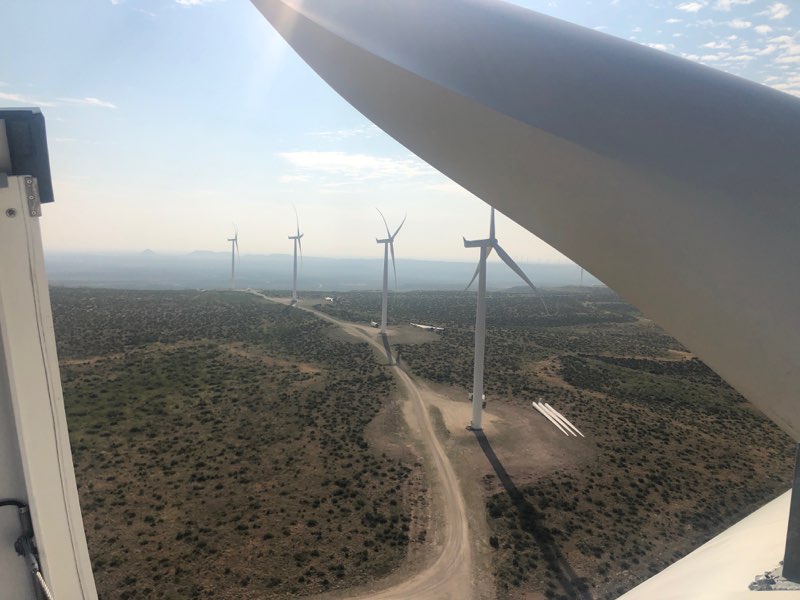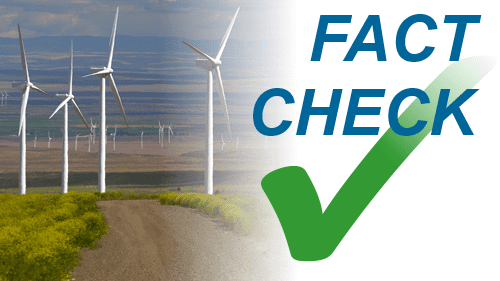VAD: Vibro Acoustic Disease or Venal Arrogant Distortion?
This article originally appeared on the blog Barnard on Wind and is reposted here with permission of the author.
For several years, a Portuguese research group has been touting the horrors of something they termed “vibroacoustic disease” or VAD, claiming that this was a physiological affliction due to extended exposure to infrasound. In recent years, they’ve been making the claim that wind turbines can cause this affliction.

What claims do they make about VAD?
– Abnormal production of collagen & elastin
– Absence of inflammatory response
– Respiratory conditions
– Immune disorders
– Genotoxic effects
– Neurological disturbances
– Cardiovascular disease
– Pericardial thickening … usually means concommitant thickening of cardiac valves and of coronary artery walls, hence the risk for ischemic heart disease (Alves-Pereira 2011)
While there seemed at first glance to be some apparent merit to a portion of VAD impacts as a reality for military flight crews exposed to 130+ dB of infrasound for extended flights, the linkage to wind farms and the imperceptible levels of infrasound that they emitted is quite a leap. After all, infrasound measured in homes is 10,000 to 1,000,000,000 times less intense than that experienced by flight crews, especially military ones. The large majority of people in the world are exposed to infrasound levels equivalent to those from wind turbines day and night from sources such as the wind, traffic and air conditioning. If people were susceptible to damaging physiological impacts from infrasound at these levels, it’s likely that evolution would have weeded those traits out long ago due to the prevalence of infrasound in the natural world.
More recent studies have specifically targeted the research of the Portuguese group, assessing whether it stands up to scrutiny.
It doesn’t.
The primary VAD researchers are Dr. Nuno Castelo Branco, described as a surgical pathologist with the Center for Human Performance, Alverca, Portugal, and Professor Mariana Alves-Pereira of Lusófona University, Lisbon. Prof Alves-Pereira is the one who has been by far the most active asserting the linkage between wind farms and health, including speaking at conferences and making submissions to wind farm planning tribunals.
Long before they were an annoyance in the wind energy and health field–where their research is constantly brought forward, and consistently dismissed–they have been a bit of a thorn in the side of the aviation industry. Reading the literature that they produce, it is clear that they have been hanging their hat for several years on workers’ compensation claims, likely appearing as expert witnesses in court claiming that low levels of occupational environmental infrasound have had insidious effects on the health of claimants.
As they freely state,
we have an on-going commitment to establish VAD as an occupational disease, reimbursable by Worker’s Compensation. (Castelo Branco 1999)
However, VAD is not recognized as a disease by any authority. As with much medical evidence in wind energy, lack of evidence and lack of recognition doesn’t mean it doesn’t show up in court time and again.
As a result, medical aviation researchers in Europe started assessing ways to evaluate and test the results that the Portuguese team were finding. After all, if VAD were actually causing physiological changes, then these changes would show up when other people looked for them.
The first study evaluated bio-effects across a very wide range of biomarkers and was published in 2009 in the Scandinavian Journal of Clinical and Laboratory Investigation by a team including researchers from the Norwegian Defence Medical Services Institute of Aviation Medicine, Department of Cardiology Rikshospitalet University Hospital, Institute for Internal Medicine Rikshospitalet University Hospital, and Institute of Immunology University of Oslo and Rikshospitalet University Hospital.
They performed a robust, control-grouped study of helicopter-crew and non-helicopter crews with serious tests before and after helicopter flights, testing far more elements of cellular structure and chemistry than anything the Portuguese crew had done. The conclusion?
The main findings of the present study were that despite noise and vibration levels close to the action level recommended by EU directives, we could not demonstrate any evidence of helicopter induced bio-effects using a broad panel of endothelial and inflammatory biomarkers.
AND
the lack of difference between the crew exposed to frequent flights and the control subjects does not support major influences of long-term exposure to the noise and vibration frequencies present in the helicopter
AND
The most likely possibility is that sound and vibration exposure have no discernible physical effects on cellular tissue. (J.I. Kasin et al 2009)
Although they found no evidence of differences between long-term exposed helicopter crews and short exposure non-helicopter crews in the markers studied, they agreed that this study only assessed acute changes and that more study was required to fully validate that no chronic changes had occurred,
So, in 2012, another study was performed specifically to assess chronic impacts. This time the study lead assembled a different and also deeply expert team appropriate to the goals of the study, including representatives from Norwegian Defense Medical Services Institute of Aviation Medicine, Unilabs A/S and Rikshospitalet University Hospital and Faculty of Medicine Department of Cardiology.
In this case, they matched helicopter crew with office workers as the control group and performed high-resolution CT scanning with two medical radiologists assessing the double-blinded results. If VAD actually existed, the helicopter pilots would show pericardial thickening. As the technology used was far above the technology used by the Portuguese team and on more sample locations, it would clearly show any problems.
Their findings?
On the basis of the CT scans, our findings do not support the existence of vibroacoustic disease, where pericardial thickening is the most prominent sign.
AND
When comparing the average pericardial thickness of all seven anatomical locations on the heart of all pilots with the same anatomical locations obtained from the office workers, there is a difference of 0.01 mm (helicopter: 1.38 mm, SD 5 0.54 mm; control: 1.37 mm, SD 5 0.33 mm; Fig. 3). This minor difference is below the CT image resolution and can therefore be ignored as not clinically relevant.
AND
Furthermore, there was no correlation between flight hours or age and pericardial thickness.
AND
Portuguese groups’ findings in the vibroacoustic disease patients do not seem to be elevated from normal values and that normal pericardial thickness may have been underestimated.
That last bit is very important. It turns out that Castelo-Branco and Alves-Pereira didn’t and don’t know how thick the pericardium is supposed to be, and apparently mistook normal thickness for something else.
The Portuguese group were wrong and have been for about three decades. The evidence necessary for them to know that they were wrong has been available for quite a while.
So who has been referencing their papers? Well, it turns out that pretty much the only papers which reference their studies are the ones they wrote themselves, studies that debunk them and now a burgeoning crop of weak papers attempting to create a facade of credibility for anti-wind health complaints. Prof Simon Chapman published a citation assessment of the VAD group’s papers in June 2013 in the Australian and New Zealand Journal of Public Health. His conclusions?
Of the 35 papers on VAD, 34 had a first author from a single Portuguese research group. Seventy four per cent of citations to these papers were self-citations by the group. (Chapman 2013)
As the average level of self-citation is 7% in science, this is a strong indication that this is not taken seriously by other scientists, and the handful of researchers working on it take themselves too seriously.
Finally, also from Prof Chapman’s paper, the only linkage of the research group’s historical — and now firmly debunked — findings to wind turbines is a case study of a single 12 year old boy.
VAD is a house of cards made of tissue paper built on shaking jello, yet it is accepted as a basis for health impacts by wind turbines by Sarah Laurie, Carmen Krogh, Nina Pierpont and Robert McMurtry among several others. Either these people with at best marginally relevant medical credentials are incompetent at assessing medical literature, they are blinded by their bias against wind turbines or they are intentionally being misleading.
References:
- Respiratory pathology in vibroacoustic disease: 25 years of research, Branco NA, Ferreira JR, Alves-Pereira M., Rev Port Pneumol. 2007 Jan-Feb;13(1):129-35, http://www.ncbi.nlm.nih.gov/pubmed/17315094
- Vibroacoustic Disease: Reality vs Conceit, www.vvm.info/file.php?id=1858
- The vibroacoustic disease – an emerging pathology, Castelo Branco NA, Rodriguez E., Aviat Space Environ Med.j, 1999;70:A1–6.
- Vibroacoustic disease: some forensic aspects, Castelo Branco NA, Rodriguez E, Alves-Pereira M, Jones DR.,Aviat Space Environ Med. 1999;70:A145–51.
- The clinical stages of vibroacoustic disease, Castelo Branco, NA. Aviat Space Environ Med. 1999;70:A32–9.
- Low Frequency Noise and Health Effects, Alves-Pereira M. Presentation at NHMRC Wind Farms and Human Health Scientific Forum – 7 June 2011 2011 [cited 2012 15 April]; Available from: http://www.nhmrc.gov.au/_files_nhmrc/file/media/events/windfarms_science_forum_mariana_alves_pereira.pdf.
- A unique case of vibroacoustic disease: a tribute to an extraordinary patient, Castelo Branco NA., Aviat Space Environ Med. 1999 Mar;70(3 Pt 2):A27-31., http://www.ncbi.nlm.nih.gov/pubmed/10189153
- CT Examination of the Pericardium and Lungs in Helicopter Pilots Exposed to Vibration and Noise, Jan Ivar Kåsin, Tor Ole Kjellevand, John Kjekshus, Geir B Nesheim, and Anthony Wagstaff, Aviation, Space, and Environmental Medicine x Vol. 83, No. 9 x September 2012, DOI: 10.3357/ASEM.3209.2012, http://www.ncbi.nlm.nih.gov/pubmed/22946349
- A helicopter flight does not induce significant changes in systemic biomarker profiles, Jan Ivar Kåsin, John Kjekshus, Pal Aukrust, Tom Eirik Mollnes & Anthony Wagstaff, Scandinavian Journal of Clinical & Laboratory Investigation, Vol. 69, No. 4, July 2009, 462–474, doi: 10.1080/00365510902745360, http://www.ncbi.nlm.nih.gov/pubmed/19333819
- How the factoid of wind turbines causing ‘vibroacoustic disease’ came to be ‘irrefutably demonstrated’, Simon Chapman, Alexis St George, Australian and New Zealand Journal of Public Health, Volume 37, Issue 3, pages 244–249, June 2013, DOI: 10.1111/1753-6405.12066, http://onlinelibrary.wiley.com/doi/10.1111/1753-6405.12066/full
Photo credit: David K. Clarke
Related articles:
Wind Turbine Syndrome: Farm hosts tell very different story, September 30, 2013
The nocebo effect, and why it's much more dangerous than wind turbines, August 22, 2013
More positive developments on wind turbine sound, July 31, 2013
When medical practitioners mislead: Trio targets family doctors with bad information, May 30, 2013
Opinion: Health effects of wind towers hyped by media, May 28, 2013
Falmouth votes to keep turbines; Australian sound study confirms others, May 24, 2013
Wind farm neighbors stressed, but it's not the turbines, April 21, 2013
New Yorker explains nocebo effect, NPR airs junk science, April 8, 2013
Science: Anti-wind groups appear to spread illnesses they complain of, March 21, 2013
Ontario resident's personal testimony: 'Anti-wind groups make me sick', March 13, 2013
GMP reports on Kingdom Community Wind sound levels, March 5, 2013
South Australia study finds infrasound from wind farms not a concern, February 4, 2013
Science proves that wind energy is safe for Wisconsin, January 9, 2013
Ontario tribunal turns down anti-wind appeal, December 26, 2012
Reason trumps fear in Australian debate on wind energy and sound, December 5, 2012
Nissenbaum paper on turbine sound recycles claims on wind energy and health already found inadequate by courts and expert panel, November 16, 2012
Negative oriented personality traits and wind turbine sound, November 2, 2012
Quality of research on wind farms published in the Bulletin of Science, Technology and Society, September 25, 2012
Wind energy associations: Wind 'one of safest forms of electricity', July 30, 2012
'Say No to Wind Turbines'–and Yes to ?, July 25, 2012
Fact check: On turbine sound, it's Bryce vs. science, July 24, 2012
Fourteen wind energy myths debunked, June 20, 2012
Wind turbines not a threat to human health, another study finds, May 31, 2012
Fact check: Lomborg lacking on wind's economics, emissions reductions, March 23, 2012
Public opinion watch: Ontarians: Wind power one of safest forms of electricity generation, March 6, 2012
Opinion: Wind turbines are good for our health, March 2, 2012
Review of wind turbine sound studies gives debate needed balance, February 28, 2012
Anti-wind-farm ‘astroturfers’ in Australia, February 27, 2012
NBC4's 'iReporter' lacks context on wind turbine sound, February 14, 2012
Fact check: Bryce misleads again on land, sound, resource use, January 31, 2012
Despite science, wind turbine sound sparks discussion in Wisconsin, January 30, 2012
Massachusetts clears wind of health effects after independent experts review evidence, January 20, 2012
Opinion: Dr. W. David Colby: Turbines and health, December 2, 2011
Canadian researchers: No direct link between wind turbines and health, November 29, 2011
Wind power: A quiet solution to climate change, June 27, 2011
Sierra Club Canada 1.1: Time to confront anti-wind fear campaign, June 15, 2011
Environmental Defence (Canada): 'No basis' for health impact claims, June 6, 2011
Sierra Club Canada: Time to confront anti-wind disinformation campaign, June 3, 2011
WINDPOWER report: New study finds minimal low-frequency and infrasound impact from wind turbines, May 25, 2011
Does the sound of money soothe Wind Turbine Syndrome?, April 25, 2011
WHO guidelines on sound are … guidelines, March 28, 2011
Scientists, doctor weigh in on wind and health, November 30, 2010
Wind turbine sound: The neighbors speak, March 18, 2010
Expert panel concludes wind turbine sounds not harmful to human health, December 15, 2009




